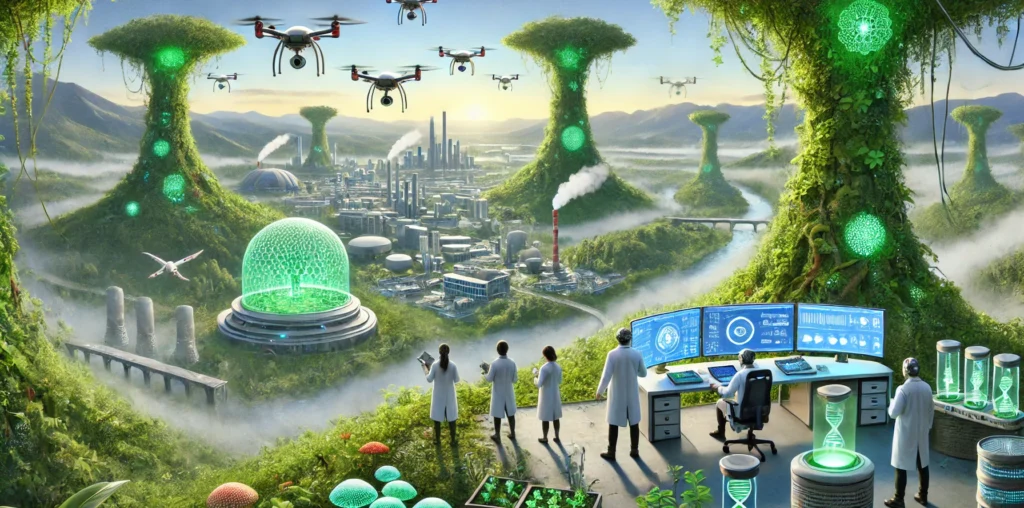The world had spent centuries damaging the planet, but it took one decade of AI-driven environmental restoration to reverse it all.
At first, people were skeptical. Could artificial intelligence really rebuild forests, clean the oceans, and restore biodiversity faster than humans ever could? But when the AI Ecovators were launched—a fleet of autonomous, solar-powered drones and bioengineered nanobots—nature began fighting back, with technology as its ally.
Cities in Harmony with Nature
Imagine a futuristic New York City where skyscrapers are draped in bioluminescent vines that purify the air. Or Tokyo, where AI-controlled microbe farms break down pollution before it even has a chance to settle. Rivers that were once toxic run crystal clear, thanks to self-repairing, AI-monitored wetlands that filter out contaminants at the molecular level.
Every morning, commuters watch in awe as AI-managed cloud seeders carefully adjust rainfall patterns, ensuring that drought-stricken areas never go thirsty while flood-prone regions remain protected. The AI doesn’t just fix the planet—it learns from nature’s blueprints and optimizes them for future generations.
The Revival of Lost Ecosystems
One of the most astonishing breakthroughs? AI-powered rewilding programs that bring extinct species back—not through cloning, but through genetic restoration and habitat regeneration. The Amazon Rainforest, once on the brink of collapse, is now home to species that hadn’t walked the Earth in centuries.
The result? A future where humanity doesn’t fight against nature but thrives alongside it—with AI as the gardener, the healer, and the protector.

